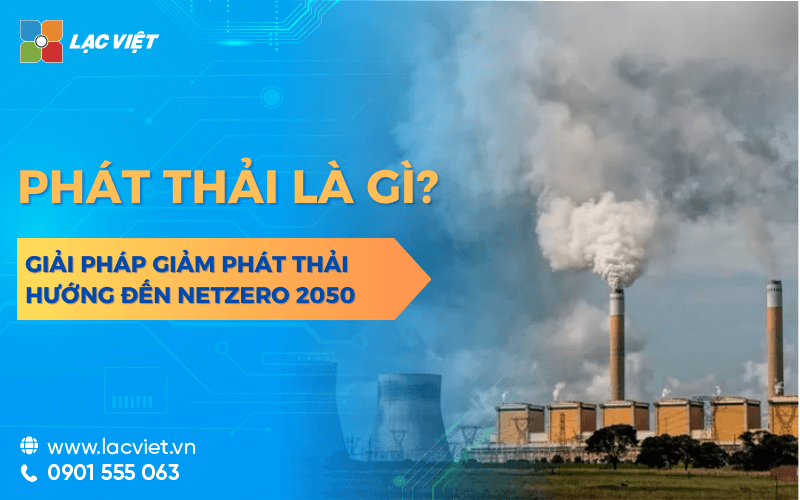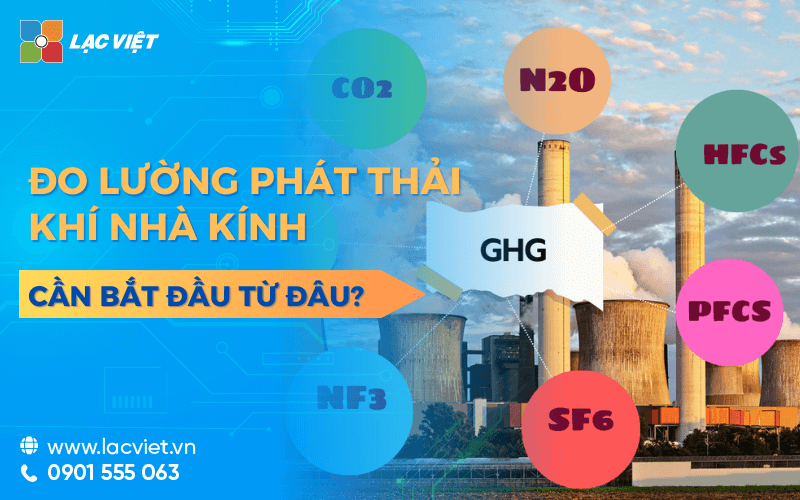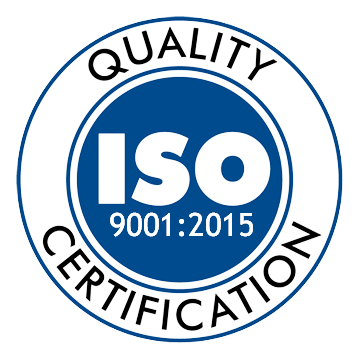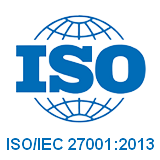In the context of climate change has increasingly become a top concern of global greenhouse gas emissions is viewed as the main cause leading to the warming of the Earth, the phenomenon of extreme weather. International organizations, governmental and business in general actions to control, reduce emissions, aims to Net Zero by 2050.
So emissions are what? Why businesses need to measure emission reduction? Article Lac Viet Computing help you understand the concept of waste, the types of emissions, common, their impact on the environment and economy, as well as the solution to help businesses reduce emissions effectively to meet the international standards of sustainability.
1. Emissions are what?
1.1. Definition emissions
Emissions (Emission) process is discharged into the environment of a gas, liquid, or solid from the activities of human and nature. In the field of environment/climate change, the term “emission” is often used to refer to the emission of greenhouse gas (GHG – Greenhouse Gases), including CO₂ (carbon dioxide), CH₄ (methane), N₂O (nitrous oxide), HFCs (hydrofluorocarbons), PFCs (perfluorocarbons), SF₆ (sulfur hexafluoride), a number of other compounds.
The greenhouse gas emissions into the atmosphere, increasing the greenhouse effect, trapping heat in the atmosphere leads to global warming. According to the intergovernmental panel on Climate change (IPCC), the amount of CO₂ in the atmosphere has increased by more than 50% compared with pre-industrial global temperature increased an average of 1.1°C in comparison with the level before the year 1900.
1.2. The range of greenhouse gas emissions according to the GHG Protocol
GHG Protocol is the international standard is widely used for the measurement and reporting of greenhouse gas emissions. Accordingly, the emissions are divided into three ranges:
Scope 1: emissions directly
Is the amount of greenhouse gas emissions from sources that business directly owned or controlled.
Emission source:
- The process of burning fuel in the boiler, engine, generator.
- Emissions from transport vehicles owned by the business.
- Emissions from the chemical reaction in the manufacturing industry.
Practical example:
A cement factory used 50,000 liters of diesel/year for the kiln. With the emission of diesel is 2,63 kg CO₂/litre, emissions Scope 1 will be:
50.000 × 2,63 = 131.500 kg CO₂/year (131,5 tons of CO₂/year)
Scope 2: emissions indirectly from energy consumption
Is the amount of greenhouse gas emissions from the production process of energy that business use, but does not directly create.
Emission source:
- Power consumption from the national grid.
- Steam, hot water, or energy purchased from outside.
Practical example:
A machine uses 1.000.000 kWh of electricity/year, with the emission of the grid is 0.5 kg CO₂/kWh emissions Scope 2 will be:
1.000.000 × 0,5 = 500.000 kg CO₂/year (500 tons CO₂/year)
Scope 3: emissions indirect other
Include all sources of emissions indirectly else in the supply chain, from the manufacturing process raw materials, freight to use the product.
Emission source:
- Emissions from the supply of raw materials.
- The process of shipping goods and products.
- Process, use and disposal of products after selling out to the market.
Practical example:
A transport company to move the 5,000 tons of cargo over a distance of 200 km, with the emission of 0.25 kg CO₂/ton/km, emissions Scope 3 will be:
5.000 × 200 × 0,25 = 250.000 kg CO₂/year (250 tons CO₂/year)
2. The type of emission privacy
Emissions can be classified based on the origin, impact, scope of influence. Here are three types of emissions, the most common that businesses need to concern when assessing control its emissions.
2.1. Greenhouse gas emissions
Greenhouse gas emissions play an important role in climate change and is the main objective in the strategy to reduce emissions towards Net Zero by 2050. The greenhouse gases popular include:
- CO₂ (Carbon Dioxide): Accounts for about 75% of the total amount of greenhouse gas emissions globally, arising from the burning of fossil fuels such as coal, oil, gas, industrial activity.
- CH₄ (Methane): methane has an impact retain heat more potent than CO₂ 25 times in the last 100 years. Source as the main emission from the livestock industry, organic waste, oil and gas extraction.
- N₂O (Nitrous Oxide): this Gas has the ability to retain heat more potent than CO₂ folding 300 times, mainly arising from the production of fertilizers, burning of fossil fuels.
- HFCs, PFCs, SF₆: Is the greenhouse gas artificially index holds heat extremely high, often used in the cooling system, the semiconductor industry, production of aluminum.
2.2. Emissions of air pollutants
In addition to greenhouse gas, industrial activities also create pollutants have serious impact on human health and the environment.
- NOₓ (nitrogen Oxide)/SOₓ (sulfur Oxides): created from the process of fuel combustion, causing acid rain, affects the respiratory tract.
- PM2.5 (fine Dust): As small particles have a diameter less than 2.5 micrometers, have the ability to penetrate deep into the lungs, causing heart disease, lung.
- CO (Carbon Monoxide): A kind of toxic gas generated from the combustion process is not completely fuel, affect the central nervous system.
2.3. Emissions from solid waste and waste water
Emissions not only from production activities, but also from solid waste and waste water.
- Landfill methane: organic matter in waste decomposition generates gas CH₄, one of the greenhouse gases have a strong impact.
- Industrial waste water Contains many organic substances, chemical, when decomposition can produce greenhouse gases or polluting water sources.
3. The impact of emissions to the environment and business
3.1. Affect climate change
Greenhouse gas emissions, especially CO₂, CH₄, N₂O, is the main cause of climate change and the increase in global temperature. According to the latest report of the IPCC (the intergovernmental panel on Climate change), the average temperature worldwide has increased by more than 1.1°C compared with the level before the industrial revolution, if measures are not taken to reduce emissions effectively, the temperature can be increased by 2-3°C by the year 2100.
A number of serious effects of climate change due to greenhouse gas emissions include:
- Increase in the frequency and intensity of weather phenomena extreme
Storm stronger, prolonged drought, and heat waves occurred more frequently. For example, Europe has undergone heatwave record in the year 2023, with temperatures up to 45°C in many countries.
- Rising sea levels
When the polar ice caps to melt, global sea level has risen by about 20 cm over the past 100 years, is expected to increase more 1m at the end of this century, threatening coastal cities. Countries such as Maldives, Bangladesh is facing the risk of losing land due to sea level rise.
- Imbalance in the ecosystem affect agriculture
Rising temperatures alter the pattern of rain, causing a decline in agricultural output. The pH of the ocean decreases due to absorption of CO₂, affecting marine ecosystems, fisheries.
- Methane (CH₄), effects retain heat more potent than CO₂
Gas CH₄ have the ability to keep strong heat 25 times CO₂ in the last 100 years. CH₄ arises primarily from livestock, landfills, oil and gas extraction, is an important target in the program to reduce emissions fast.
These impacts affect not only the environment but also impact on business, changes the whole way the production operation of the global economy.
3.2. Consequences for business
Emissions not controlled not only affect the environment but also poses many challenges for the business. The business has emissions will be faced with many risks, legal, financial.
The cost of compliance with legal high rise
More and more policies to control greenhouse gas emissions is issued on the global scope. The business if not done inventory and emission reduction will be faced with high costs to meet regulations.
For example:
- CBAM (adjustment mechanisms border carbon) of the European union: Requires the export business of steel, cement, aluminum, fertilizers, electricity, hydrogen must report emissions, subject to the carbon tax if they do not meet the standard emission reduction.
- System trading emissions (ETS) of the EU, China, Usa: corporate requirement to buy credits carbon if emissions exceed the prescribed level.
Risk prestigious brands, business
Customers, investors and partners increasingly interested in the criteria for ESG (Environmental – Social – Governance). The business has emissions can ostracized or lost the contract to big business.
For example:
- Fashion H&M has changed the supply chain to reduce emissions, and to use recycled materials to meet the expectations of consumers.
- Tesla become the leading brands in the automotive industry thanks to its focus on electric vehicles, and contribute to reducing emissions of CO₂.
Fluctuations in the supply chain
Many businesses worldwide are asking suppliers to provide data emission, minimize carbon footprint. If you do not meet this standard, the business may be excluded from the supply chain.
For example: Apple is committed to only partner with suppliers to reach the goal to be carbon neutral by 2030.
Increased cost of production and operation
When the fossil fuel sources is taxed higher carbon, businesses will incur the cost of production higher than if no transition to clean energy sources.
The consequences this entails business must have a strategy to reduce emissions from now to ensure a competitive, sustainable development.
4. The commitment to Net Zero by 2050 and responsible business
Before the serious impact of emissions to the environment – economic, more than 140 countries, with thousands of businesses have committed to reaching the target of Net Zero by 2050, i.e. reducing emissions at a minimum, offset emissions through measures to absorb carbon.
4.1 Commitment to Net Zero 2050 of the national
- The European union (EU): Commitment to reduce emissions by 55% by 2030, reaching Net Zero by 2050.
- American: aim to be carbon neutral by 2050 with investment in clean energy technology, capturing carbon.
- Chinese: Committed to reaching the Net Zero by the year 2060 with the plan strong in the energy sector.
4.2 Business need to do to meet the goal of Net Zero?
- Evaluation and measurement of emissions:
Businesses need to make inventory of greenhouse gas according to international standards such as the GHG Protocol and ISO 14064 to know the exact amount of emissions Scope 1, 2, 3 his.
- Plan to reduce emissions at each stage:
Short term: Improve energy efficiency, optimize production processes.
Medium-term: Use of renewable energy, apply technology to reduce emissions.
Long-term: investment in capturing carbon storage (CCS), market participants credits carbon.
- Comply with the specified standards international legal:
ISO 14064: international standards on inventory, and report greenhouse gas.
SBTi (Science-Based Targets initiative): orientation business set a goal of reducing emissions consistent with climate science.
The commitment to Net Zero is not only responsible but also the opportunity to business innovation, cost savings, and attract investment.
5. The solution to reduce emissions for business
In the context of the trend to reduce emissions is becoming mandatory standard on global businesses need to build a specific route to optimize manufacturing operations, reducing the amount of greenhouse gases and towards Net Zero by 2050. The deployment of the solution to reduce emissions need to be done in stages: short-term (1-3 years), medium term (3-7 years) and long term (7-15 years).
5.1. Short term solution (1-3 years)
This stage focuses on the remedies fast, less expensive, help businesses reduce emissions immediately which does not affect production.
Improved energy efficiency
- Upgrade lighting systems: Replacing fluorescent bulbs, halogen lamps LEDS help reduce power consumption from 40 to 60%.
- Optimize HVAC system (heating, ventilation, air conditioning): periodic maintenance HVAC system to optimal performance. Improved conditioning equipment, use technology to save energy.
- Energy management smart: Apply system power monitoring (EMS – Energy Management System) to monitor power consumption in real-time and optimized operation.
Optimal supply chain and reduce emissions indirectly
- Selection of suppliers have policies to lower emissions: Priority suppliers to use renewable energy or have committed to reducing emissions.
- Improve process freight: Used means of transport, performance, and better fuel, priority freight rail or waterways instead of roads to reduce emissions.
5.2. Solution the medium term (3-7 years)
This stage requires businesses to invest in technology and infrastructure to create sustainable improvements than in the management of emissions.
Transition to renewable energy
- Installation of solar electric systems, wind power: Reduced dependence on fossil energy, help businesses reduce emissions Scope 2. A factory installation 1MWp solar power on the roof of the workshop, help reduce 1,100 tons CO₂/year
- Signed a contract to buy power clean (PPA – Power Purchase Agreement): Businesses can purchase electricity from the farm, solar power, wind power without the need for investment in infrastructure.
Recycling periodic materials
- Optimized the production process to reduce waste: Reduce the rate of waste product in production and increased recycling raw materials.
- Switch to recyclable packaging or potentially biodegradable: Reducing emissions from plastic waste, solid waste treatment.
App technology for capturing carbon storage (CCS – Carbon Capture & Storage)
- Technology capturing CO₂ from production process: Business can hold the gas CO₂ arising from the boiler, power plant, re-use in other industries, such as concrete production, chemical.
- For example, A cement factory applied technology CCS can decrease 30-50% energy emission of CO₂ in the production process.
5.3. Solution long-term (7-15 years)
This stage requires large investments in innovative technology and complete transformation model production to meet the goal of Net Zero by 2050.
Converted to models produce zero emissions
- Use hydrogen blue (Green Hydrogen) replace fossil fuels: Hydrogen blue produced from renewable electricity can replace traditional fuels in industry, steel, cement, chemicals.
- Produced according to the economic model circulation: Transition to production with 100% of raw materials can be recycled or biodegradable. Nike has applied model “Move to Zero”, use recycled materials for 75% of their products.
Buying credits carbon and market participants trading emissions
- Join trading system emissions (ETS – Emission Trading Scheme): businesses can buy or sell credits carbon-based emissions his practice. The EU ETS is trading system for emissions, the world's largest, help businesses in the region to reach the emission reduction targets with optimum cost.
- Investing in projects to offset carbon (Carbon Offsetting): Business can finance the project and absorb carbon as reforestation, restoration ecology to offset the emissions of their own.
6. The business pioneer in reducing emissions
In the context of climate change is occurring rapidly, many businesses in the world have been actively implementing strategies to reduce emissions to towards the goal of Net Zero by 2050. Below is the typical pioneer in the industry, ranging from production of consumer goods, food to technology and electric cars.
6.1. Unilever: journey to reduce emissions in the supply chain
Unilever is one of the businesses fast-moving consumer goods in the world with a network of production and supply stretching across more than 190 countries. The company has committed to reach the level of emissions net of 0 to year 2039 and is taking steps to actualize this goal.
The main solution:
Using 100% renewable energy at the factory
- Unilever has transformed the entire production system in Europe, North America to use wind power, solar power.
- The company is committed to 2030, all the energy in the supply chain will come from renewable sources.
Optimized supply chain to reduce emissions Scope 3
- Cooperation with suppliers have committed to reducing emissions.
- Use means of transport powered by electricity or hydrogen fuel for logistics.
Improved product packaging
- Replace plastic packaging traditional materials recycled or biodegradable.
- Goal 2025: Reduce by 50% the amount of plastic materials in the product.
Results achieved:
- 15% off emissions CO₂ within the next 5 years (2015-2020).
- Save 800 million EUR operating costs thanks to energy optimization and supply chain.
- Improve brand image, attract more investors interested in the criteria for ESG.
6.2. Vinamilk: Integration of clean energy into the production system
Is dairy enterprises in Vietnam are present in more than 50 countries, Vinamilk had the strong step in reducing greenhouse gas emissions, sustainable development.
The main solution:
Deployment of renewable energy at the farm, factory
- Solar electric systems have been installed at more than 10 cow farm milk factory.
- The amount of solar electricity generated, accounting for about 25% of the total energy demand of the company.
Apply economic models circulating in livestock production
- Handle organic waste to create biogas (biogas) production service electric.
- Re-use of effluent for irrigation and cooling in the factory.
Reducing emissions from supply chain
- Optimized transportation system to reduce fuel consumption.
- Integration of sustainability criteria in supply chain collaboration with suppliers to reduce emissions.
Results achieved:
- Reduced by more than 50,000 tons of CO₂ each year, thanks to the use of solar energy systems, biogas.
- Save operating costs thanks to improved energy performance.
- Be honored in the Top 50 Business sustainable development in Vietnam.
6.3. Tesla: shaping the future with electric cars do not emit
Tesla is not just an automotive company, which is also the symbol for the transition to clean energy. This company has been forefront in reducing greenhouse gas emissions by the development of electric vehicles (EVs), battery energy storage systems and solar energy.
The main solution:
- Promote the trend of electric vehicles to replace vehicles use fossil fuels: Electric car of Tesla helps reduce average of 4.6 tons of CO₂ per year on each of the vehicles compared with gasoline cars. By 2025, Tesla set a target production of over 10 million electric cars per year, contributing significantly to reducing global emissions.
- Development of battery storage of renewable energy: Tesla offers solutions, Powerwall and Megapack help store electricity from solar energy, to reduce dependence on the grid. This technology helps households and businesses can operate with lower emissions.
- Investing in technology, steel production, blue for car: Tesla is partnering with the steel manufacturer to develop steel blue – produced by hydrogen instead of coal, significantly reducing the emissions of CO₂ in the supply chain.
Results achieved:
- Helped reduce more than 20 million tons of CO₂ per year thanks to electric vehicles, clean energy systems.
- Market-driven, global, forced other automakers such as Ford, GM, Volkswagen must be converted to the production of electric vehicles.
- Building an ecosystem of renewable energy sustainable combination of electric vehicles, energy storage and solar energy.
6.4. IKEA: develop sustainable supply chain and the economic model of circulatory
IKEA is one of the retail company, the largest furniture in the world, has set a goal to be carbon neutral by 2030 through many innovative solutions.
The main solution:
Using 100% renewable energy at its stores, distribution centers: IKEA has invested in nearly 1,000 wind turbines, 2 million solar panels across the globe.
Conversion method of shipping goods: IKEA is testing electric trucks, transported by ship, not emissions to reduce the amount of CO₂ from logistics.
Product design environment-friendly: Use recycled wood, bio-plastic, natural fiber instead of material has high emission. By 2025, the entire IKEA products will be designed according to the model of economic circulation.
Results achieved:
- Reduced by more than 30% of the emissions of CO₂ in the supply chain within the past 10 years.
- By 2030, IKEA is committed to reduce 70% of emissions compared to 2016.
To adapt and lead in the green economy, businesses need to proactively implement solutions to reduce emissions under each stage, from optimized production processes, use of renewable energy, to invest in technology for capturing carbon. The business pioneers such as Unilever, Vinamilk, Tesla, IKEA has been proved that reducing emissions not only help protect the planet but also bring competitive advantage long-term.
Now is the time to act! Your business can start by assessing current emissions, building strategies to reduce and participate in the initiative Net Zero. Let's together towards a future of sustainable development, where economic growth and environmental protection can parallel together.













